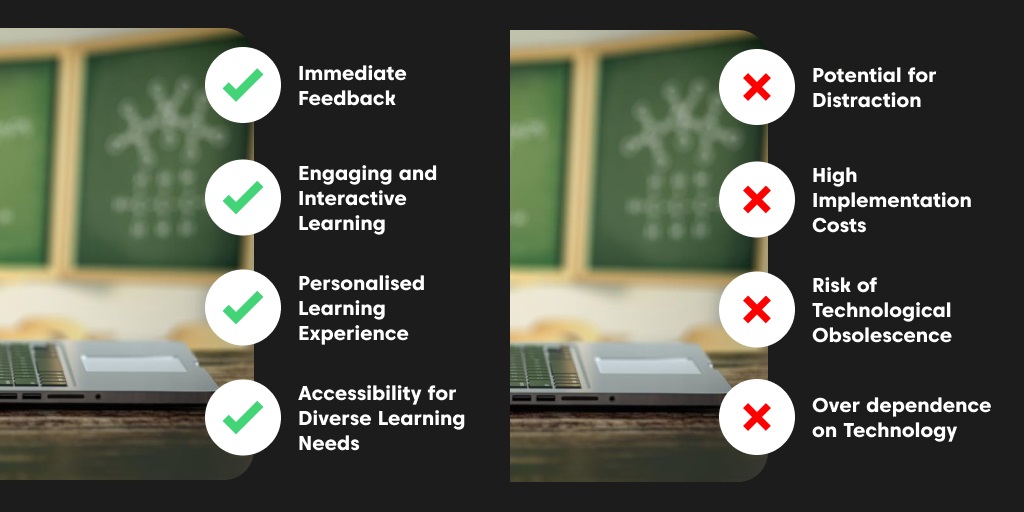As technology permeates every aspect of modern life its transformative power is particularly evident in the education sector. This fusion of technology and education often referred to as Educational Technology or EdTech, represents fundamental shift. It changes the way educational content is delivered and consumed. Computer-Assisted Learning (CAL), cornerstone of EdTech has been evolving for decades. It has seen a significant surge in recent years. It revolutionizes traditional educational paradigms.
What Is Computer-Assisted Learning?
Computer-Assisted Learning encompasses educational activities facilitated by computers and other digital tools. This eliminates need for constant human intervention. This form of learning isn’t confined to any single device. It spans a variety of digital platforms. These range from smartphones and tablets to desktop computers. CAL utilizes a variety of software solutions and instructional methods tailored to diverse educational needs and subjects. These range from foreign languages to mathematical concepts. This occurs across all levels of education—from primary schools to adult learning centers.
Types of CAL
CAL can be segmented into several categories, each with its unique approach to enhancing the learning experience:
Tutorials: These are software programs designed to replace or supplement traditional instruction. They guide students through educational materials and subjects, providing explanations, and intermittently testing comprehension with interactive questions, thus offering immediate feedback.
Gamified Learning: This approach incorporates elements of gameplay into educational activities. It motivates learners by establishing system of rewards and achievements. Badges or levels are unlocked after mastering specific concepts.
Practice: Mimicking traditional study techniques like flashcards. This method uses software to present and review content in repetitive manner. It reinforces knowledge through frequent exposure.
Demonstrations: Employing multimedia elements. Videos and animations can engage different senses to enhance understanding. Advanced technologies like virtual and augmented reality are particularly effective. They create immersive educational experiences that simulate real-world scenarios.
Pros of Computer-Assisted Learning
Immediate Feedback: One of the most significant advantages of CAL is the provision of real-time feedback. This feature allows learners to understand their mistakes and grasp concepts correctly almost instantaneously. For instructors, the immediate assessment data and analytics provided can be a powerful tool to customize teaching approaches and improve educational outcomes.
Engaging and Interactive Learning: CAL methods are inherently dynamic and designed to captivate the learners' attention. Unlike the passive reception of information typical in traditional learning environments, CAL encourages active participation. This engagement is crucial in maintaining student interest and motivation, particularly in an age where digital media often competes for their attention.
Personalized Learning Experience: Adaptive learning technologies enable CAL programs to adjust the difficulty level and pace according to individual learning curves. This personalization ensures that each student faces challenges tailored to their current skill level. It enhances both satisfaction and effectiveness in learning.
Accessibility for Diverse Learning Needs: CAL is invaluable for providing inclusive educational experiences to students with various learning disabilities or special needs. Customizable features and the ability to adjust the learning environment can help bridge learning gaps more effectively than traditional methods.
Cons of Computer-Assisted Learning
Potential for Distraction: In environments where traditional teaching methods are still in use CAL tools might serve more as distraction than an aid. The allure of technology can overshadow core educational objectives. This situation makes it difficult for teachers to maintain classroom discipline and focus.
High Implementation Costs: The initial setup of CAL systems can be prohibitively expensive. Maintenance costs add to financial burden. Periodic updating of CAL systems elevates the expense even further. This financial barrier can limit access to up-to-date educational technology. Particularly for underfunded schools or in developing regions.
Risk of Technological Obsolescence: The rapid pace of technological advancement means that CAL tools can quickly become outdated. The necessity for regular software updates and hardware upgrades can impose additional costs. Logistical challenges also arise for educational institutions.
Overdependence on Technology: There is significant risk that both educators and learners might become overly reliant on digital tools. This dependence can diminish the effectiveness of interpersonal teaching. It can reduce the development of critical thinking. Problem-solving skills are often better nurtured through direct human interaction.
Conclusion
While Computer-Assisted Learning offers a lot of benefits. These can significantly enrich the educational landscape. It is not without its drawbacks. The key challenge for educators is to integrate these technologies. They should complement and enhance traditional teaching methods. This must be done without overshadowing or replacing essential human elements of education. Achieving this balance is crucial for leveraging the full potential of CAL to support and advance both teaching and learning experiences.
